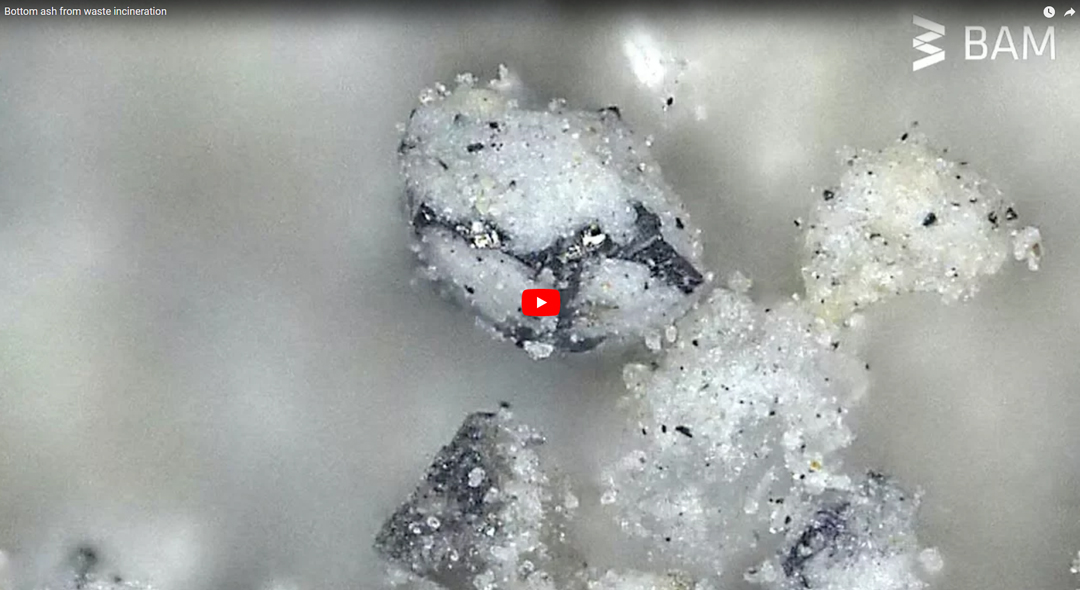
YouTube video "Bottom ash from waste incineration"
Source: BAM, Division Contaminant Transport and Environmental Technologies
Landfilling of untreated waste has stopped in Germany in the year 2005. However, in the course of the different waste treatment procedures secondary waste products were generated. Amongst others around 5 million tons of municipal solid waste incineration (MSWI) bottom ash (BA) is generated per year in Germany. MSWI BA is an inhomogeneous mixture of about 10-15% metals and 80-85% mineral aggregates and has good properties regarding construction purposes. Nevertheless, due to different reasons the application as recycling building material in e.g. road or landfill construction is limited. In the past MSWI BA therefore was aged for chemical and physical stabilization prior to the application. Based on this procedure not only the migration of pollutants will be inhibited but also the appearance of the metals will be affected. In essence, mineral coatings arise on nearly all particle surfaces and the particles will grow together. Due to this hardening process the recovery of metals will be complicated.
In the recent years mainly the high copper price has caused a lot of expenditures for an improved treatment of MSWI BA. Magnet separators and eddy current separators are widely used devices and by now present in nearly each treatment plant. Sporadically, sensor based separators comes into operation. For the improvement of such separation methods crushing is used at different stages of the treatment train. On the other side the disposition of the mineral residues is crucial for the whole procedure. Unspecific comminution is therefore frequently undesirable. In contrast wet treatment can improve the prospects for a recycling of the remaining mineral aggregates by lowering the salt content. A treatment direct after combustion prior to the aging process is advantageous, too. In dependence of the framework still a huge amount of mineral aggregates are getting landfilled. This is mainly true for the fine fraction in spite of the high recycling potential.
The different developments in the industrial sector of MSWI BA treatment will be presented and discussed by taking into account three innovative concepts. In doing so, the impacts on the environment will be considered just as economic and legal aspects.
Innovative treatment trains of bottom ash (BA) from municipal solid waste incineration (MSWI) in Germany
Olaf Holm, Franz-Georg Simon
Waste Management, Volume 59, January 2017, Pages 229-236
BAM Department Materials and the Environment, Division Contaminant Transport and Environmental Technologies


